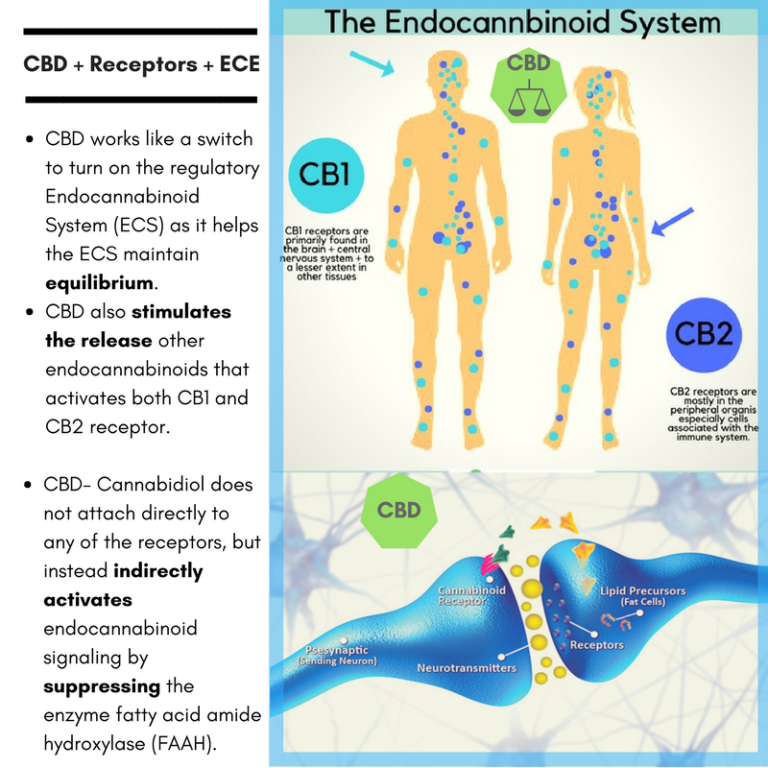CBD and other Cell Receptor Sites
CBD activates a type of serotonin receptors known as 5-HT1A serotonin receptors. Activating these receptors enhances the effects of serotonin. This has a wide range of effects, notably an anti-depressant effect. The 5-HT1A serotonin receptor is implicated in a variety of both biological and neurological processes, such as anxiety, addiction, appetite, sleep, nausea, vomiting and pain perception.

CBD also stimulates TrpV1. TrpV1 is also known as transient receptor potential cation channel subfamily V member 1, also known as the capsaicin receptor and the vanilloid receptor 1. TrpV1 mediates pain perception, inflammation and body temperature. Because CBD binds to the TrpV1 receptor and thus activates it, this is a possible mechanism by which CBD may be a particularly effective treatment for neuropathic pain.
CBD blocks a receptor known as GPR55. CBD mitigates epilepsy by restoring brain inhibition, thus reducing seizures. CBD achieves this effect largely by blocking the activity of GPR55 in the hippocampus, a critical brain region for seizure activity. And the effect extend beyond epilepsy. The role that GPR55 plays in cancer is becoming increasingly appreciated. The activation of GPR55 is thought to have pro-tumor effects, whereas the blockade of GPR55 activity (i.e., the effects of CBD) has anti-tumor effects. Thus, CBD decreases cancer cell proliferation.
What about the primary receptors for CBD, CB-1 receptors? What happens when there are fewer CB-1 receptors? This occurs in cancer cells. In cancer cells, the production of CB-1 receptors is reduced. CB-1 production is reduced by inhibition of genes which code for CB-1 receptors. Gene expression occurs when DNA is transcribed, producing mRNA. Gene expression is moderated by a promoter region. In this case, the promoter region gets methylated. The more methylation that occurs in the promoter regions of theses genes, the less gene expression occurs. This abberant methylation the CB-1 promoter region appears to be a precipitating factor in the development of cancer.